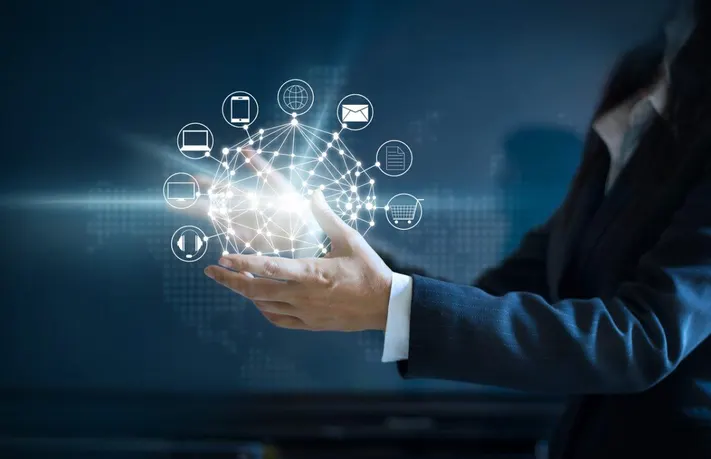The Impact of Artificial Intelligence in HR: Opportunities and Challenges
In today’s rapidly evolving HR landscape, the integration of Artificial Intelligence (AI) is revolutionizing traditional practices, presenting a wide array of opportunities and unique challenges. As the importance of AI in HR continues growing, it is crucial for organizations to understand its impact on various HR processes.
With its potential in predictive analytics, workforce planning, automation, and data-driven decision-making, AI can change multiple facets of HR. In this article, we will explore the extensive opportunities that AI brings in this field, while also recognizing and addressing the challenges that are presented during its implementation.
Opportunities of AI in HR
The incorporation of Artificial Intelligence (AI) in HR opens up a world of opportunities to improve efficiency and precision across a range of HR processes. It has the potential to liberate professionals from repetitive and time-consuming tasks and makes it possible for them to concentrate on more strategic initiatives. This automation streamlines activities such as data entry, document management, and administrative duties, reducing the likelihood of errors and increasing overall efficiency.
Furthermore, AI is making a positive impact on the recruitment, onboarding and employee management processes. AI-powered tools assist in candidate screening, resume analysis, and matching candidate profiles to job requirements. This not only saves time but also enhances the precision of candidate selection.
During the onboarding activities, AI can facilitate the creation of tailored and interactive onboarding programs, helping new employees to quickly dive into company policies, procedures, and the organizational culture. This ensures a smooth transition, expediting new hires’ ability to become valuable contributors to the company.
In performance management, AI tools aid in evaluating employee performance by analyzing data from diverse sources such as performance metrics, survey feedback, and peer reviews. AI algorithms can identify patterns, trends, and areas for improvement, facilitating fair and objective performance assessments.
AI in HR Processes and Analytics
By using a considerable amount of data, predictive models can help HR professionals make smarter decisions. For example, data analytics can provide better understanding of the current state of the workforce, taking into account multiple factors such as their skills, competencies, performance, engagement, and level of satisfaction. By leveraging these insights, HR specialists can more accurately forecast future outcomes, including turnover rate, retention rate, productivity, and profitability.
By applying sophisticated algorithms and machine learning to analyze big and complex data sets, AI-driven analytics can reveal insights into how employees perform, engage, and stay in the organization. For example, AI-driven analytics can help HR professionals:
- Identify high-performing and high-potential employees and provide them with personalized feedback, recognition, and development opportunities.
- Detect low-performing and disengaged employees and provide them with targeted interventions, coaching, and support.
- Predict which employees are likely to leave the organization and provide them with retention strategies, such as career advancement, flexible work arrangements, and compensation incentives.
- Analyze employee feedback and sentiment and provide them with action plans to improve their work environment, culture, and well-being.
Balancing AI and the Human Touch
One way to balance AI and the human touch is to leverage AI while still fostering meaningful human connections with employees. For example, HR professionals can let AI handle mundane and clerical tasks, such as sorting through resumes, arranging interviews, and following up with candidates. This can free up time and resources for HR professionals to focus on more strategic and interpersonal aspects of their role. They can also use AI to augment their communication and collaboration with employees, by using chatbots to provide instant feedback, guidance, and support.
And yet, HR professionals should not rely solely on AI to communicate with employees. They should also use human channels, such as phone calls, video calls, and face-to-face meetings, to establish personal relationships and emotional bonds with employees.
Another way to balance AI and the human touch is to explore ways to personalize HR solutions that guarantee a sense of support and value among employees. For instance, HR practitioners can leverage AI to gather and evaluate information concerning employee preferences, requirements, and objectives. This will help them design and deliver customized HR solutions that match the individual characteristics and expectations of each employee. Examples of such solutions are personalized learning paths, career plans, and rewards for employees.
However, HR professionals should not rely solely on AI to personalize their HR activities. They should also use human feedback, input, and involvement to ensure employees have a voice and a choice in their HR journey. For example, surveys, focus groups, and co-creation sessions are the perfect means to solicit employee opinions and suggestions on how to improve HR solutions. HR professionals can also use recognition programs and celebration activities to acknowledge employee contributions and achievements.
Conclusions
AI in HR is a game-changer that offers many opportunities and challenges for HR professionals. AI can help HR professionals automate tasks, improve recruitment and onboarding processes, as well as performance and talent management, and as a consequence, deliver data-driven insights into employees’ behavior and outcomes.
Nevertheless, AI presents both ethical and practical challenges, encompassing data quality, security, and privacy, avoidance of bias and discrimination, and the preservation of human interaction and trust. Therefore, HR professionals need to embrace AI while considering its implications and adopting a human-centered approach.


